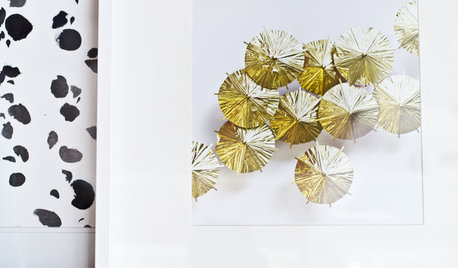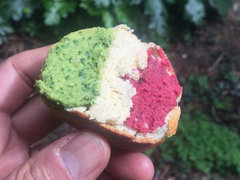Make your own tofu?
John Liu
8 years ago
Featured Answer
Sort by:Oldest
Comments (35)
Lars/J. Robert Scott
8 years agolast modified: 8 years agoJohn Liu
8 years agoRelated Discussions
IKEA boxes and make your own drawer fronts... anyone done this?
Comments (16)remodelfla- Have you considered painting the cabinets and adding in the wood tones in somethings else, like flooring, or butcherblock counters? This is what I am doing with my IKEA kitchen. Perhaps the Scherrs idea is worth checking out though, especially if they are now pre-drilling. I am intrigued to see you design when it is completed- I love the industrial/contemporary/vintage combination that both you and lisalists describe. I have been describing my look as English/Southern/farmhouse/scullery/industrial. grlwprls- I can't wait to see your design either! I love your idea of early American gorcery store industrial. In fact, last summer when I visited a museum in the Outer Banks, I took a picture of their General Store display (I think it was supposed to represent what it would have looked like in about 1910 or so), just for the molding and beadboard! Oh, how pitiful we are, the TKO....See Morea bit OT: make your own cooking show in your new kitchen
Comments (1)Oh that would be fun. I made a tutorial for bread making and posted the "still" pics on my photobucket. It was step by step. I'll definitely have to look into this. Thank you c...See MoreDo you make your own jerky?
Comments (10)Yep....I make my own beef jerky. I own 2 dehydrators, both with fans.....purchased at Thrift stores. $7 ea. The one has 8 racks, that stack on top of each other, the other has 5. Yep, slice the fat free meat, marinate, put on racks. Yes....I started making it in the oven before I bought the dehydrators. Just use foil, low heat....takes 8 hours and I noticed NO difference in the flavor. BTW takes 8 hours in my dehydrators when they are full. I just use salt, soy sauce & worcestershire sauce. Liquid smoke is optional. JMO Of the two dehydrators I own, The American Harvester is the fastest.....nicest! I googled consumer reports before buying it...it had GREAT reviews!...See Morewhat is the cheapest way to make your own potting soil
Comments (3)I might add that the usefulness of homemade potting soil will depend somewhat on what you want to do with it. Many people don't like putting real soil in containers because, as the organics gradually degrade away, what you're left with is just soil, which can compact. I expect we're going to get some complaints about that. That happens most seriously on a time scale of years. So if you're just using the potting soil to plant something for a short time, no problem. If you're planting a tree, you might want to use something better. Or, just dig up the plant every few years, stir in some more organic material, and replant. The advantage of real soil is that many of the nutrients are there. Soil-less potting soil has few nutrients to speak of....See Moreagmss15
8 years agonannygoat18
8 years agoGooster
8 years agolast modified: 8 years agoJohn Liu
8 years agolast modified: 8 years agosleevendog (5a NY 6aNYC NL CA)
8 years agoJohn Liu
8 years agosleevendog (5a NY 6aNYC NL CA)
8 years agoJohn Liu
8 years agoJohn Liu
8 years agoJohn Liu
8 years agonannygoat18
8 years agoJohn Liu
8 years agonannygoat18
8 years agoJohn Liu
8 years agoJohn Liu
8 years agoGooster
8 years agoplllog
8 years agoJohn Liu
8 years agolast modified: 8 years agoJohn Liu
8 years agoplllog
8 years agonannygoat18
8 years agoJohn Liu
8 years agoGooster
8 years agonannygoat18
8 years agoJohn Liu
8 years agoplllog
8 years agol pinkmountain
8 years agoplllog
8 years agonannygoat18
8 years agoLars
8 years agoJohn Liu
8 years agoplllog
8 years ago
Related Stories

DIY PROJECTSMake Your Own Abstract Photo With Cocktail Umbrellas
Looking for a conversation piece? Experiment with your own version of this DIY photography project
Full Story
KITCHEN DESIGNRenting? 15 Ways to Make Your Kitchen Your Own
If you’re feeling stuck with a blah kitchen you can’t renovate, these small moves can help make it feel like home
Full Story
HOLIDAYSMake Your Own Mini Advent Village
Make the run-up to Christmas extra special with a treat a day in each tiny paper Advent house
Full Story
KITCHEN DESIGN18 Ways to Make a Kitchen Your Own
Give Your Kitchen a Personal Stamp With Color, Finishes and Surprise
Full Story
WALL TREATMENTSCan't Find the Right Wallpaper? Make Your Own
For one-of-a-kind walls, just use your imagination. Custom wallpaper is easier and less expensive than you might expect
Full Story
SHOP HOUZZShop Houzz: How to Make Your Own Terrarium Centerpiece
Top your table with a mini jungle or desert inside a glass terrarium
Full Story
DECORATING GUIDESPersonal Spaces: Ideas for Making a Rental Your Own
Think creatively — and kiss your landlord if he or she allows you to paint those bare walls
Full Story
LAUNDRY ROOMSLaundry Makes a Clean Break With Its Own Room
Laundry rooms are often a luxury nowadays, but a washer-dryer nook in a kitchen, office or hallway will help you sort things out
Full Story
MOST POPULARHoliday DIY: 25 Ideas for Make-Your-Own Decor and Gifts
We show you how to create cute and clever Christmas and Hanukkah gifts, ornaments, wreaths and more
Full Story
HOUZZ TOURSMy Houzz: Family Renovates a 1963 Eichler to Make It Their Own
A Northern California couple expecting their first child move quickly to freshen up their new midcentury modern home
Full Story








plllog